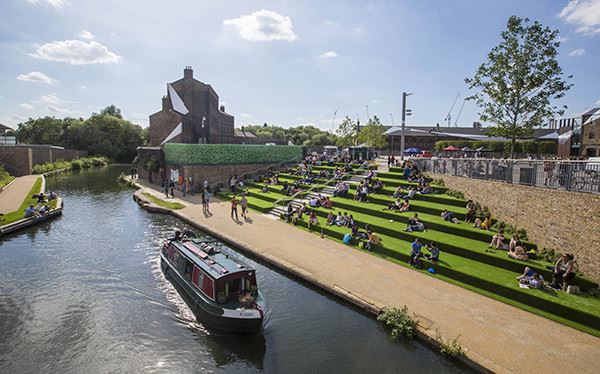Post
REPORT | Privately Owned Publicly Accessible Space
5 Dec 2019
As the Mayor of London draws up the London Public Charter, the London Society hosted a timely debate on privately owned, publicly accessible spaces in the City. Featuring a collection of speakers: Professor Matthew Carmona, Peter Bishop, Robert Evans and Erica Belcher, report by Abigail Lane.
The divisive question of public space ownership and management is set to retain its importance as London’s geography changes and its population continues its unprecedented rate of expansion. Views are polarised; with those who see the private ownership of public spaces as tax-saving display of entrepreneurship increasingly at odds with those who see it as a threat to the accessibility of open-spaces in the city.
Professor Matthew Carmona opened the discussion by explaining how the debate around public spaces has become increasingly polarised and, by explaining the different opinions, Carmona demonstrated the complexity of a conflicting set of values that/which show no signs of reconciliation any time soon.
However, a consensus was reached about the petty restrictions increasingly associated with privately owned spaces that are open for public use. Carmona advocated for a stronger emphasis on safeguarding freedoms over petty restrictions – citing the heavy regulation of Trafalgar Square as an example – which Peter Bishop, head of Camden Town Planning agreed with.
Indeed, as the publicisation and rehabilitation of private space is being brought into the public realm it brings with it important questions, Carmona said, such as what are our rights as consumers, and what are the responsibilities of the space’s owners?
Erica Belcher’s work with Public London found that the rights of the consumer were rarely made clear and that the enforcement of park rules differed wildly across the ten sites surveyed by her and her team. Belcher found that those employed to manage the sites were generally working to achieve what they thought the owners wanted, casting doubt on the notion that public spaces can be owned by a minority and enjoyed by the majority.
On the other side of the debate, Robert Evans (Director of Planning at Argent) firmly located the public at the heart of the planning and operation of King’s Cross. By not holding commercial events on the site and by instead encouraging family-friendly events, such as the Lumiere festival of light and the newly-established Kings Cross Academy, we were shown that, if guided by a desire to safeguard the public usage, we can have accessibility and privatisation.
With the debate drawing to a close and a stimulating Q&A taking place, it became clear that there are many voices within this debate, and that considerable work still needs to be done in order to ensure that they are heard.
